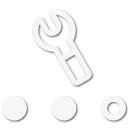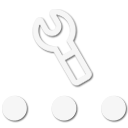So I just recently purchased my first gen Yota Rav4, and I want to get into overlanding. My dad always loved taking me camping out in the middle of nowhere when I was a kid and I've been wanting to get into that again with overlanding. My question: where do I start? I have some funds to put into this, a couple grand, but nothing crazy, I don't currently have anywhere to work on my car as of right now I'm living on a boat, but I do have time and determination and access to a metal shop (cutting torches, welders, cutting tools and material etc.). I know I want to do some mechanical modifications to the car eventually, but I feel like I should put that off until I have access to an actual covered garage, but I do have a parking lot that I can do some basic work in, stuff that I can put together in a few hours. I also plan on going to a couple junk yards and grabbing some miscellaneous parts off of other first gen ravs (if I can find any) but other than that I have no solid plans other than a long list of basic mods (roof racks, storage bins, tool kit, rubber floor mats etc.) but they're all like amazon or ebay orders and aren't anything that is too expensive. Basically what I'm looking for is anyone who has a rav4 (preferably the same model) who has any tips or mods they think are important.
Just started, got the car, a little money, and a lot of ideas
- Thread starter RadNueb
- Start date
MPG Overland
Rank I

Enthusiast I
I don't have a Rav4 however I do have a Toyota. I overland/camp. I best advice that I can provide is, that you take the rig out and get a feel for what you may need. The type of camping /overlanding you doing will affect the type of modification you make and determine the gear you need. That's also advice I got after I had already figured that out.
I’d always recommend starting small with quality of life mods like a water jerry can with a hose and valve mounted higher in my car so I can get “running” water while I’m camping.
Just get out there and see what works what doesn’t if you want to sleep inside the car you could do a platform with drawers and make a bed on top of it.
If you plan on really getting lost invest in nice recovery gear.
Hope this helps
Just get out there and see what works what doesn’t if you want to sleep inside the car you could do a platform with drawers and make a bed on top of it.
If you plan on really getting lost invest in nice recovery gear.
Hope this helps

Steward I
As others have said, don't get lost in the consumerism of overlanding. There is a lot of cool stuff out there, but do YOU need it, probably not.
Just plan a first trip out camping and go someplace close to home. Sleeping, food/cooking, water, shelter are the basic things and they can be accomplished for very little money. Get out there and see what happens and what your camping and vehicle NEEDS are!
Just plan a first trip out camping and go someplace close to home. Sleeping, food/cooking, water, shelter are the basic things and they can be accomplished for very little money. Get out there and see what happens and what your camping and vehicle NEEDS are!

Trail Mechanic II
- 1,500
- First Name
- John
- Last Name
- Ellis
- Member #
-
6385
It's all been said, here.
1. Get the car, a cooler of food, a few blankets, and go out for a night.
2. Evaluate what you took and how it performed.
3. Evaluate what you didn't take and how it could have made things better.
4. Evaluate what you took and didn't use, and ask if you need it on the next trip.
Then rinse, lather, and repeat.
Don't go buying stuff before your experience teaches you that you need it - EXCEPT RECOVERY GEAR AND TOOLS. If you're going off pavement alone, you'll want a shovel. Anywhere you go, you'll want a recovery strap or rope. Find the common socket sizes and other tools you'll need to do basic repairs. A little battery jumper kit is good, too.
1. Get the car, a cooler of food, a few blankets, and go out for a night.
2. Evaluate what you took and how it performed.
3. Evaluate what you didn't take and how it could have made things better.
4. Evaluate what you took and didn't use, and ask if you need it on the next trip.
Then rinse, lather, and repeat.
Don't go buying stuff before your experience teaches you that you need it - EXCEPT RECOVERY GEAR AND TOOLS. If you're going off pavement alone, you'll want a shovel. Anywhere you go, you'll want a recovery strap or rope. Find the common socket sizes and other tools you'll need to do basic repairs. A little battery jumper kit is good, too.

Advocate II
Less is more! Keep it as stock as possible and upgrade as necessary. Also keep in mind GVWR and axle load limits if you do start upgrading. Everything you add over the GVWR limit makes the car handle worse, brake worse (UNSAFE) and reliability goes out the window. Be intentional and you will have a well built vehicle, do not throw the catalog at it.So I just recently purchased my first gen Yota Rav4, and I want to get into overlanding. My dad always loved taking me camping out in the middle of nowhere when I was a kid and I've been wanting to get into that again with overlanding. My question: where do I start? I have some funds to put into this, a couple grand, but nothing crazy, I don't currently have anywhere to work on my car as of right now I'm living on a boat, but I do have time and determination and access to a metal shop (cutting torches, welders, cutting tools and material etc.). I know I want to do some mechanical modifications to the car eventually, but I feel like I should put that off until I have access to an actual covered garage, but I do have a parking lot that I can do some basic work in, stuff that I can put together in a few hours. I also plan on going to a couple junk yards and grabbing some miscellaneous parts off of other first gen ravs (if I can find any) but other than that I have no solid plans other than a long list of basic mods (roof racks, storage bins, tool kit, rubber floor mats etc.) but they're all like amazon or ebay orders and aren't anything that is too expensive. Basically what I'm looking for is anyone who has a rav4 (preferably the same model) who has any tips or mods they think are important.
Get out there and enjoy the vehicle!
@12C20 and @scubasteve2002 said it all.
Don't leave home ever again without recovery gear (15+' tow strap rated at least twice your vehicle's weight, tree saver strap, D-ring or soft shackles, a shovel, and jumper cables). I cannot stress this enough. The tree saver allows you to make a bigger loop at the end of your tow strap when needed without using up length. On the flip side, a longer tow strap is not always better - figure out what makes the most sense, and get what you need.
Good use of equipment will get you far. Good use of common sense will get you back home.
Don't leave home ever again without recovery gear (15+' tow strap rated at least twice your vehicle's weight, tree saver strap, D-ring or soft shackles, a shovel, and jumper cables). I cannot stress this enough. The tree saver allows you to make a bigger loop at the end of your tow strap when needed without using up length. On the flip side, a longer tow strap is not always better - figure out what makes the most sense, and get what you need.
Good use of equipment will get you far. Good use of common sense will get you back home.

Contributor III
Would you consider traction board necessary? And worth spending over $100 or sticking to the cheaper Amazon ones?@12C20 and @scubasteve2002 said it all.
Don't leave home ever again without recovery gear (15+' tow strap rated at least twice your vehicle's weight, tree saver strap, D-ring or soft shackles, a shovel, and jumper cables). I cannot stress this enough. The tree saver allows you to make a bigger loop at the end of your tow strap when needed without using up length. On the flip side, a longer tow strap is not always better - figure out what makes the most sense, and get what you need.
Good use of equipment will get you far. Good use of common sense will get you back home.
@Clarisa_Rosas_Orosco For my uses, no. For some others' uses, very possibly yes. I've never been in a stuck condition where traction boards would have really helped, much. They're useful for some applications more than others, so that would be more of a use case judgment call. The items that I listed were simply all-use items which can be used under any circumstance; that's not to say that my suggestions are the most effective, just among the most versatile.
Traction boards are great for traversing soft terrain (such as soft sand and wet mud) in places where there are no winching points or other vehicles to assist in recovery. They're about useless in rock crawling, and are unnecessary if you're in a dense forest and already have a tow strap or winch. On the flip side, they can save you from needing a winch, even if you have one, and can help to prevent environment damage in some cases.
As for pricing, pay for what you need. If you think you might need it, buy a cheap one. If you use it and it works, stick with it. If you use it and it breaks, buy an expensive one. If you can't afford the risk of it breaking when you use it, skip the cheap one and buy the expensive one the first time.
I'm on my second recovery strap by this logic; my first one literally disintegrated in storage and I replaced it after using it once. My second recovery strap has seen many uses and is still in good shape after several years. This is the same with any equipment for any use; a poor-quality piece will be cheaper, and it will not serve you as well, for as long. You don't have to overpay for good quality, just understand that a low price is always paid twice.
Traction boards are great for traversing soft terrain (such as soft sand and wet mud) in places where there are no winching points or other vehicles to assist in recovery. They're about useless in rock crawling, and are unnecessary if you're in a dense forest and already have a tow strap or winch. On the flip side, they can save you from needing a winch, even if you have one, and can help to prevent environment damage in some cases.
As for pricing, pay for what you need. If you think you might need it, buy a cheap one. If you use it and it works, stick with it. If you use it and it breaks, buy an expensive one. If you can't afford the risk of it breaking when you use it, skip the cheap one and buy the expensive one the first time.
I'm on my second recovery strap by this logic; my first one literally disintegrated in storage and I replaced it after using it once. My second recovery strap has seen many uses and is still in good shape after several years. This is the same with any equipment for any use; a poor-quality piece will be cheaper, and it will not serve you as well, for as long. You don't have to overpay for good quality, just understand that a low price is always paid twice.

Trail Mechanic II
- 1,500
- First Name
- John
- Last Name
- Ellis
- Member #
-
6385
I don’t have traction boards, but I do have tire chains that I carry. I’ve used them once to unstuck myself, and my brother borrowed them once to unstuck his son.Would you consider traction board necessary? And worth spending over $100 or sticking to the cheaper Amazon ones?@12C20 and @scubasteve2002 said it all.
Don't leave home ever again without recovery gear (15+' tow strap rated at least twice your vehicle's weight, tree saver strap, D-ring or soft shackles, a shovel, and jumper cables). I cannot stress this enough. The tree saver allows you to make a bigger loop at the end of your tow strap when needed without using up length. On the flip side, a longer tow strap is not always better - figure out what makes the most sense, and get what you need.
Good use of equipment will get you far. Good use of common sense will get you back home.
As far as price goes, there is the thought that if your life could depend on it, a couple hundred dollars is cheap. That’s a tough call, and one you might want to think about.
Maybe start your travels and look back after each trip and ask if you enjoyed that kind of terrain, and if traction boards would have been good to have, or would be good to have on your next trip.
I still can’t bring myself to spend on them.
@12C20 Right, same logic here. My entire off-road area is either beach sand or dense forest, and only once have I needed more recovery than I had (needed to use a winch on another truck when my rig slid sideways into a ditch between two paved roads). Besides that, I've never been far enough away from a tree to need anything longer than my 30' tow strap. Traction boards are one of those items that are only really useful in certain scenarios, and most of us haven't got the money to spend on or the space to lug around a bunch of long, bulky rectangles that we have cheaper, more storage-friendly alternatives for.
That being said, @Clarisa_Rosas_Orosco if you need them, absolutely buy them. Just, we can't give an objective "yes" or "no" answer to a question that is subjective in nature.
That being said, @Clarisa_Rosas_Orosco if you need them, absolutely buy them. Just, we can't give an objective "yes" or "no" answer to a question that is subjective in nature.

Contributor III
Super helpful, and great points. I appreciate the input first hand!@12C20 Right, same logic here. My entire off-road area is either beach sand or dense forest, and only once have I needed more recovery than I had (needed to use a winch on another truck when my rig slid sideways into a ditch between two paved roads). Besides that, I've never been far enough away from a tree to need anything longer than my 30' tow strap. Traction boards are one of those items that are only really useful in certain scenarios, and most of us haven't got the money to spend on or the space to lug around a bunch of long, bulky rectangles that we have cheaper, more storage-friendly alternatives for.
That being said, @Clarisa_Rosas_Orosco if you need them, absolutely buy them. Just, we can't give an objective "yes" or "no" answer to a question that is subjective in nature.
As others note - get out and travel - you'll learn as you go. For our last "big trip" (53,000 km in 11 months), we took out the rear seats, put in a bed (lumber cost USD 100), added a small fridge, and took minimal recovery kit, tyre repair kit and compressor, minimal tools, stuff for sleeping, clothes, etc. We bought plastic storage boxes for food, and that was about it. Vehicle modifications - none (the JK has good clearance and angles).
The RAV4 is a good vehicle, and with AT tyres can reach the majority of places you may wish to go. I would spend zero on modifications until you learn the limitations you discover as you travel. You could drive a RAV 4 to Tuktoyaktuk or Tierra del Fuego unmodified.
The RAV4 is a good vehicle, and with AT tyres can reach the majority of places you may wish to go. I would spend zero on modifications until you learn the limitations you discover as you travel. You could drive a RAV 4 to Tuktoyaktuk or Tierra del Fuego unmodified.




